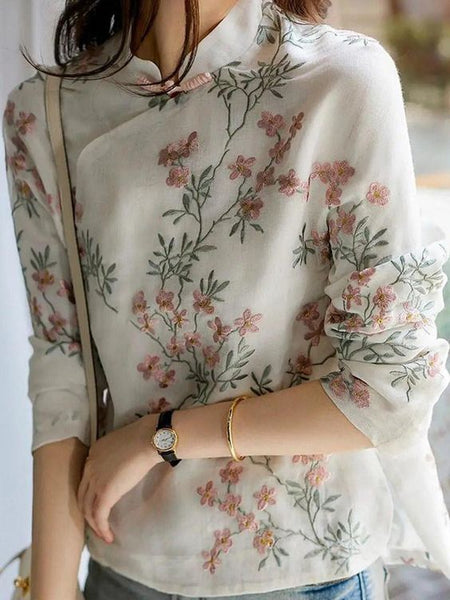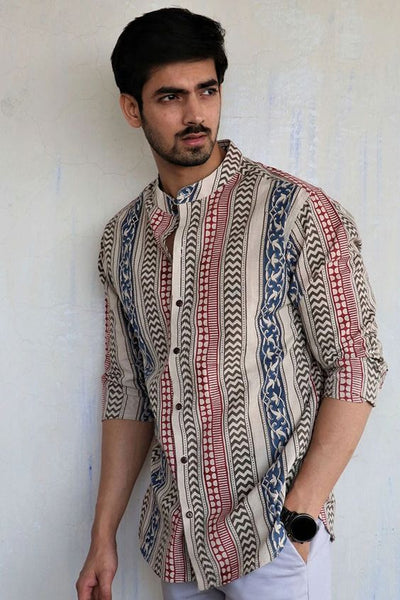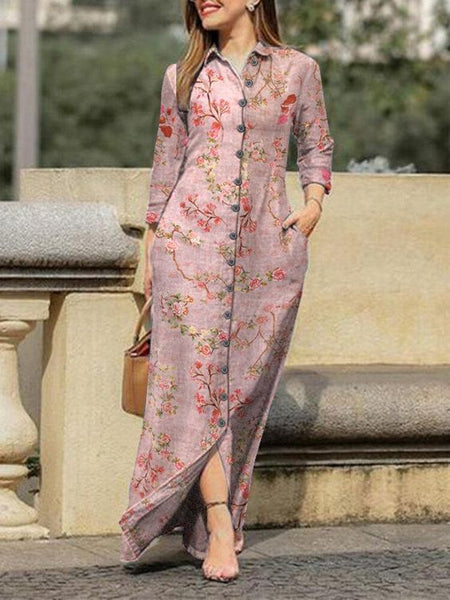Fabric choice plays a crucial role in the comfort and durability of clothing. When it comes to selecting the perfect fabric, cotton and blended cotton are two popular options to consider. In this article, we will explore the differences between cotton and blended cotton, highlighting their unique characteristics and helping you make an informed decision about which fabric suits your needs best.
Introduction
Fabric choice is crucial when it comes to comfort, breathability, and durability of clothing. Cotton and blended cotton fabrics are widely used due to their desirable properties. Understanding the differences between these two fabrics will help you make an informed decision when purchasing clothes or selecting materials for your sewing projects.
Cotton Fabric
Cotton is a natural fiber derived from the cotton plant. It has been used for centuries and remains a popular choice due to its numerous benefits. Cotton fabric is soft, breathable, and hypoallergenic, making it suitable for individuals with sensitive skin. It offers excellent moisture absorption, keeping you cool and dry in warm weather. Additionally, cotton is durable and can withstand regular washing and wear.
Blended Cotton Fabric
Blended cotton fabric, as the name suggests, is a combination of cotton and synthetic fibers such as polyester or rayon. This blend is often used to enhance the properties of cotton and create fabrics with improved characteristics. Blended cotton fabrics can offer the best of both worlds by combining the comfort and breathability of cotton with the added strength and wrinkle resistance of synthetic fibers.

Differences Between Cotton and Blended Cotton
Here are a few differences between cotton and cotton blend fabric:
|
Parameters |
Cotton |
Blended Cotton |
|
Composition |
100% natural cotton fibres |
Cotton blended with synthetic fibres like polyester, nylon, spandex |
|
Breathability |
Highly breathable, it allows airflow through the fabric |
Retains some breathability but is reduced due to synthetic fibre content |
|
Comfort |
Exceptional comfort, especially in warm and humid climates |
Relatively comfortable but can feel warmer due to reduced airflow |
|
Moisture Wicking |
Sweat is absorbed by the cotton fibres and wicked to the surface to evaporate |
Lower moisture absorption and wicking capacity compared to 100% cotton |
|
Texture |
Soft, smooth or coarse texture, depending on the cotton type |
Smooth texture, which may feel less natural next to skin |
|
Thermal Properties |
Good heat conduction to keep warm in winters and cool in summers |
Improved insulation to retain body heat compared to 100% cotton |
|
Opacity |
Densely woven cotton can be thicker and prevent light from passing through |
Blended fabric tends to be more translucent or sheer |
|
Pilling Resistance |
Loose cotton fibres may pill and ball up on the surface |
More resistant to pilling and fuzzing |
|
Wrinkle Resistance |
Tends to wrinkle easily during wear and requires ironing |
Resists wrinkling and retains shape well after washing |
|
Durability |
Withstands frequent use and washing without considerable wear |
Relatively durable but may be prone to shrinkage over time |
|
Colour Retention |
Natural cotton fibres hold and reflect colours well after multiple washes |
Colours may fade faster compared to natural cotton |
|
Skin Allergies |
Well-tolerated by most skin types with low irritation |
Potential skin irritation in sensitive individuals due to synthetic fibres |
|
Sustainability |
Renewable and biodegradable material |
Not fully biodegradable, microplastic pollution concern |
|
Price |
Typically, a more affordable option |
Blended versions cost more due to advanced synthetic fibres. |
Factors to Consider When Choosing Fabric
When deciding between cotton and blended cotton fabrics, several factors come into play:
- Purpose: Consider the intended use of the fabric, whether it's for casual wear, sportswear, or formal attire.
- Climate: Assess the climate of your location to determine the fabric's breathability and suitability.
- Comfort: Take into account your personal preference for comfort and the fabric's ability to regulate moisture.
- Care Instructions: Consider the level of care and maintenance required for the fabric. Some fabrics may need special attention, such as dry cleaning or delicate washing.
- Allergies: If you have allergies or sensitive skin, cotton fabric's hypoallergenic properties may be a better choice compared to blended cotton, which may contain synthetic fibers that can cause discomfort.
- Cost: Evaluate the budget you have allocated for fabric purchase. Cotton fabrics tend to be more affordable compared to blended cotton fabrics, which may have a higher price due to the inclusion of synthetic fibers.

Pros and Cons of Cotton Fabric
|
Pros |
Cons |
|
Breathable and comfortable: Cotton fabric is lightweight, soft and breathable. The fibres allow air to circulate and provide comfort, especially in warm weather. |
Wrinkles easily: Cotton creases and wrinkles easily during wear and requires frequent ironing to maintain a crisp look. |
|
Absorbs moisture: Cotton is a hydrophilic fibre that very well absorbs and wicks away moisture. Sweat and oils are drawn into the fabric to keep the skin dry. |
Prone to shrinking: Exposing cotton to heat causes the fibres to tighten, resulting in shrinkage, generally around 5% after the first wash. |
|
Durable and long-lasting: Cotton is composed of cellulosic solid fibres durable enough to withstand frequent use and machine washing without considerable wear and tear over time if cared for properly. |
Susceptible to pilling: The surface of cotton fabrics tends to pill or develop bunches of tangled fibres from use, which gives a fuzzy appearance. |
|
Versatile and customisable: Cotton is suitable for various garments, dying easily into beautiful colours and prints. It also blends well with other textiles like polyester and spandex. |
Retains stains: Being very absorbent, cotton quickly picks up dirt oils and is prone to visible staining compared to synthetic fabrics unless pre-treated. |
|
Renewable and biodegradable: Cotton is a sustainable fibre grown as a rain-fed crop requiring little water consumption. At the end of life, it decomposes back into the soil. |
Prone to mildew: Damp cotton items take longer to dry and are at risk for mildew growth, which causes musty odours without proper drying and storage. |

Pros and Cons of Blended Cotton Fabric
Blended cotton fabrics offer a combination of cotton's benefits with the added advantages of synthetic fibers.
Here are the pros and cons:
|
Pros |
Cons |
|
Improved durability: Cotton Blend meaning the synthetic fibres woven into the cotton to make it more resistant to pilling, stretching and wear over time. |
Less breathable: The non-cotton fibres impair breathability, making blended cotton warmer, especially in hot climates. |
|
Wrinkle resistant: Blended cotton maintains shape and resists wrinkles much better after washing and wearing due to the stability of synthetic fibres. |
More expensive: The production process of blended fabrics costs more, so they are priced higher than pure cotton. |
|
Faster drying time: With synthetic fibres that dry quicker than cotton, blended cotton fabrics dry faster, preventing mustiness or mildew growth. |
Not fully biodegradable: Due to petroleum-based fibres, these fabrics may release microplastics as they break down. |
|
Colour retention: Colours and prints applied to blended cotton tend to maintain vibrancy without fading or running even after repeated washing. |
Increased environmental impact: More resources and energy go into producing cotton blended with manufactured fibres than pure cotton. |
|
Customisation options: Cotton can be easily combined with man-made materials like nylon, polyester, spandex, etc., to attain specific qualities. |
Skin irritation potential: Some sensitive individuals may find irritation from synthetic fibres blended with cotton. |
|
Versatility in uses: The functional benefits blended cotton offers through attributes like stretch, moisture wicking, and warmth make it suitable for multiple apparel and home goods. |
Heat retention and static: Blended fabrics trap heat next to the skin more, leading to sweat discomfort, and can cling due to static. |
 How to Care for Cotton and Blended Cotton Fabrics
How to Care for Cotton and Blended Cotton Fabrics
Proper care is essential to maintain the quality and longevity of both cotton and blended cotton fabrics. Here are some tips:
- Read and follow the care instructions provided by the manufacturer.
- Machine wash cotton fabrics in cold or lukewarm water with a mild detergent.
- Avoid using bleach or harsh chemicals that can damage the fabric.
- To minimize shrinkage, air dry or tumble dry on a low heat setting.
- Iron cotton fabrics at a medium heat setting, or use a steamer to remove wrinkles.
Blended cotton fabrics may have specific care requirements due to the presence of synthetic fibers. Follow the care instructions carefully to avoid damaging the fabric.

Conclusion
When choosing between cotton and blended cotton, consider factors such as the fabric's purpose, the climate you'll be wearing it in, your comfort preferences, and the level of care required. It's also important to consider any allergies or sensitivities you may have.
Thank you for reading this guide on cotton vs. blended cotton fabrics. We hope it has provided you with valuable insights to help you choose the right fabric for your clothing and sewing projects.
FAQs (Frequently Asked Questions)
1. Can blended cotton fabrics cause allergies or skin irritation?
Ans: Blended cotton fabrics may cause discomfort for individuals with allergies or sensitive skin. It's advisable to check the fabric composition and consider pure cotton if you have any concerns.
2. Do blended cotton fabrics shrink like pure cotton?
Ans: Blended cotton fabrics may have reduced shrinkage compared to pure cotton. However, it's essential to follow the care instructions provided by the manufacturer to minimize any potential shrinkage.
3. Are blended cotton fabrics more expensive than pure cotton?
Ans: Yes, blended cotton fabrics are often more expensive due to the inclusion of synthetic fibers. The cost may vary depending on the specific blend and brand.
4. Do blended cotton fabrics retain their shape better than pure cotton?
Ans: Yes, blended cotton fabrics tend to have better shape retention and resistance to wrinkling compared to pure cotton. The synthetic fibers in the blend provide additional strength and durability.
5. Can I machine wash blended cotton fabrics?
Ans: It depends on the specific blend and care instructions. Some blended cotton fabrics can be machine washed, while others may require special care like delicate washing or dry cleaning. Always refer to the care instructions for the best results.
 Call Us
Call Us
